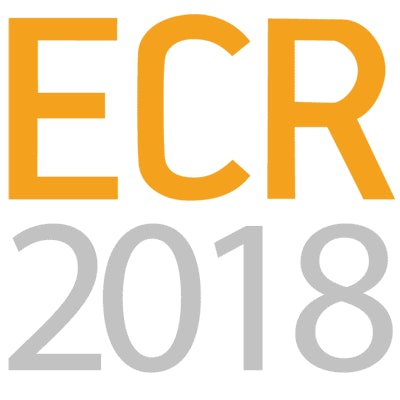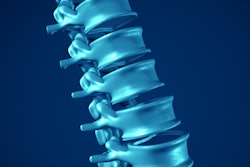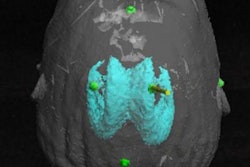
VIENNA - Augmented reality (AR) technology could potentially be used to guide injections of the lumbar facet joint, saving time and avoiding radiation dose exposure for radiologists, according to research presented on Saturday at ECR 2018.
In a feasibility study, a group from Balgrist University Hospital in Zurich concluded that AR-guided lumbar facet joint injections using a Microsoft HoloLens headset were feasible and accurate in an experimental setting. There were also no potentially harmful needle placements during AR-guided injections on a spine phantom.
"This technique may allow facet joint injections faster and without radiation [exposure] to the performing radiologists," said Dr. Christian Pfirrmann, who presented the research on behalf of first author Dr. Christoph Agten.
HoloLens
The Swiss researchers set out to assess the accuracy of AR-guided lumbar facet joint injections in a spine phantom. After a CT image was acquired from the phantom, a 3D model was reconstructed from the CT data and uploaded to the HoloLens. The model was then registered to the phantom, enabling a hologram to be created and used by the radiologist to guide the joint injections.
To test this method, two musculoskeletal radiologists performed both 20 AR-guided facet joint injections and 20 traditional CT-guided injections. After each needle was placed, a control CT study was performed. A third musculoskeletal radiologist then assessed the needle placement and categorized the result as either perfect (inside the joint space), acceptable (not necessary to re-place the needle), incorrect (need to re-place the needle), or unsafe (in the vicinity of nerves or vessels). The researchers also measured the procedure time from when the needle was first picked up by the radiologist until it was finally placed.
The results were similar for both radiologists, with a slight -- but not statistically significant -- tendency toward having an increased number of acceptable placements and fewer perfect placements. There were no unsafe needle placements.
| Performance for radiologist 1 | ||
| Rating | CT-guided injection | AR-guided injection |
| Perfect | 16 | 13 |
| Acceptable | 4 | 6 |
| Incorrect | 0 | 1 |
| Unsafe | 0 | 0 |
| Performance for radiologist 2 | ||
| Rating | CT-guided injection | AR-guided injection |
| Perfect | 19 | 17 |
| Acceptable | 1 | 3 |
| Incorrect | 0 | 0 |
| Unsafe | 0 | 0 |
The difference in performance between the injection methods was not statistically significant for either the first radiologist (p = 0.390) or second radiologist (p = 0.602).
Faster procedures
The AR-guided needle placements were also much faster to perform:
- Mean time for AR-guided injections: 14 ± 6 seconds
- Mean time for CT-guided injections: 39 ± 15 seconds
The difference was statistically significant (p < 0.001) for both radiologists, according to the researchers.
In a response to a question from the audience, Pfirrmann noted that it currently takes 20 to 25 minutes to perform the necessary preparations for the AR-guided injections. This includes extracting the CT image data, creating the stereolithography (STL) file, uploading the data to the HoloLens, and positioning the 3D model on the body.
"I think in the future this will get faster and faster," he said.




















